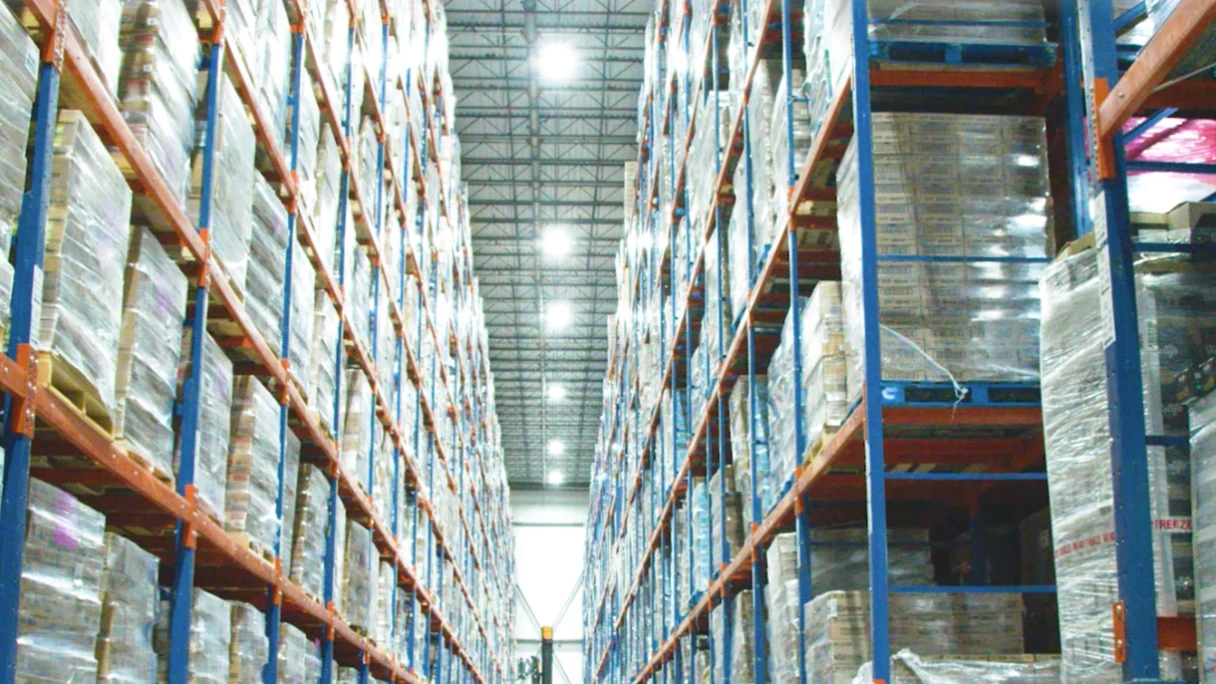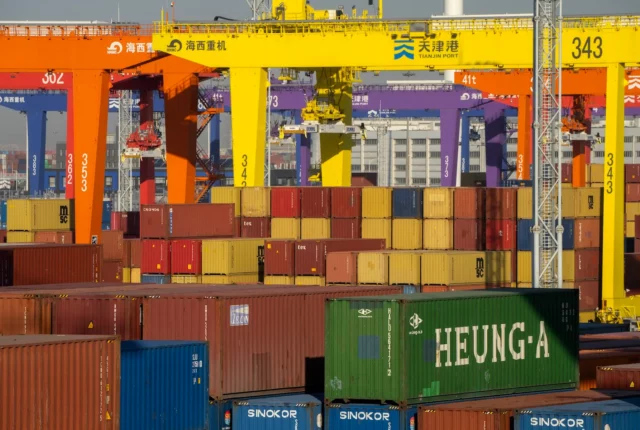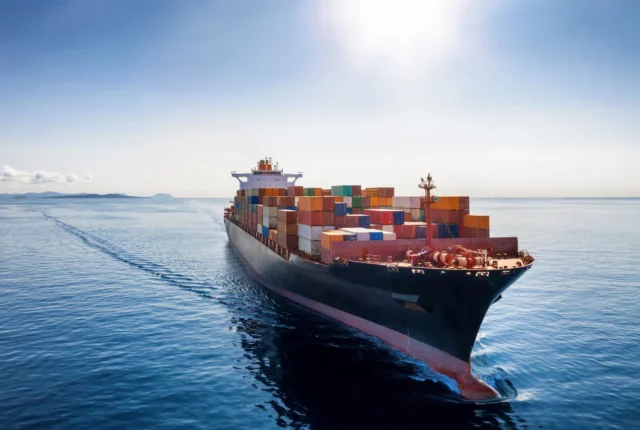
Why Cold Storage Demand Is Surging Across the U.S. Warehousing Sector
The explosive growth of online shopping—and particularly perishable grocery delivery—has dramatically increased the need for rapid, temperature‑controlled fulfillment. Consumers now expect same‑day or next‑day delivery of fresh produce, dairy, frozen meals, and meal‑kit services.
Cold storage warehouses must scale and adapt to support this shift in consumer behavior. Meeting those expectations requires robust cold chain infrastructure close to population centers.
Expansion of the Food and Beverage Industry
Demand for refrigerated warehousing is growing hand in hand with new food trends. Frozen snacks, plant‑based meat alternatives, fresh‑cut fruits and vegetables, and ready meals continue to surge in popularity. These products must be stored and transported under precise temperature conditions to maintain quality and safety, placing greater pressure on cold storage capacity.
Pharmaceutical and Life Sciences Cold Chain Needs
The global rollout of COVID‑19 vaccines underscored the critical importance of ultra‑cold chain logistics—forcing upgrades to warehouses and last‑mile delivery systems. Beyond vaccines, temperature‑sensitive biologics, gene therapies, and insulin products require specialized cold rooms. Pharmaceutical companies and clinical trial organizations are investing in dedicated cold storage to support these high‑value items.
Regulatory and Safety Requirements
Strict regulatory frameworks from agencies like the FDA and USDA mandate tight temperature controls, monitoring, and traceability for perishable goods—including food and pharmaceuticals. Compliance systems that log, track, and report temperature excursions are now mandatory in most cold warehouses. This drives demand for modern, certified facilities with end‑to‑end digital monitoring systems.
Supply Chain Resilience and Risk Mitigation
Global disruptions—such as pandemics, extreme weather, or international shipping delays—have highlighted the value of inventory buffers. Companies are diversifying cold storage locations across multiple states to reduce risk. Having more geographically distributed facilities allows flexibility and continuity when one region is impacted by weather, labor issues, or transport bottlenecks.
Innovation in Cold Storage Infrastructure
Cold warehouses are no longer mere refrigerated boxes. Advanced automation such as robotic pallet movers, automated racking systems, and smart conveyors speed up operations and reduce labor costs. Energy‑efficient refrigeration systems, variable‑speed compressors, and natural refrigerants like ammonia or CO₂ help reduce carbon impact and long‑term operating costs.
Real Estate Trends and Location Strategy
Modern cold storage facilities are being built or retrofitted near major consumption hubs—such as Southern California, the Chicago metro, and the East Coast’s urban corridors—to minimize delivery time and cost. Improved highway access, rail connectivity, and proximity to seaports also factor heavily into site selection. Real estate premiums near these transport arteries are high, fueling greenfield development further inland as well.
Market Dynamics and Investment Trends
Institutional investors and real estate investment trusts (REITs) are pouring capital into cold storage real estate, drawn by long‑term leases with operators and strong growth projections.
Fourth‑party logistics (4PL) providers—which oversee entire supply chain ecosystems—are increasingly integrating cold storage capabilities into their strategic networks. Rather than owning or operating facilities directly like 3PLs, 4PLs coordinate multiple partners, technologies, and assets to deliver end-to-end cold chain solutions.
Operational Challenges and Costs
Running a cold warehouse is costly. Energy consumption can be several times higher than standard dry storage, and facility maintenance—including refrigeration system upkeep—adds complexity. Skilled labor for handling perishable items, compliance, and temperature monitoring is also a key cost. Workforce training and retention are challenges, especially in tight labor markets.
Regional Hotspots for Cold Storage in the U.S.
Leading regions including California’s Central Valley and Inland Empire, the Midwest near Chicago and Minnesota, and the Southeast around Atlanta and Miami have seen rapid growth in cold warehouses. Emerging markets in the Northeast corridor and Texas are also getting attention. These hubs align consumption demand with production zones and transportation logistics.
Sustainability and Environmental Considerations
Energy‑efficient facility design and renewable power sources are increasingly priorities for new cold warehouses. Solar panel installations, LED lighting, advanced insulation, heat‑recovery systems, and use of low‑GWP (global warming potential) refrigerants reduce carbon footprint. Regulators and brand customers are pushing operators toward greener practices.
Technology Trends Shaping Cold Warehousing
Digitally connected warehouses use IoT sensors, cloud‑based monitoring dashboards, automated alerts, and predictive analytics to prevent spoilage. Blockchain and track‑and‑trace systems enhance transparency across the supply chain, especially for pharmaceuticals and high‑value perishables. Route optimization and inventory forecasting reduce costs and increase service levels.
Future Outlook and Emerging Opportunities
Looking ahead, demand for cold storage will continue growing as meal‑kit companies, online grocers, and biotech firms expand. Cold storage as a service (CSaaS) models—akin to shared warehouses—are gaining traction, especially for smaller brands or regional suppliers who don’t want to build their own facilities. Innovation in modular prefabricated cold rooms could accelerate regional deployment.
Economic and Consumer Impacts
Greater cold capacity improves food availability, shortens delivery lead times, and may help moderate prices through reduced spoilage and inefficiency. Communities near cold storage development benefit from new jobs—from warehouse staff to technicians and drivers—and regional economic growth.
Strategic Implications for Stakeholders
The surging demand for cold storage in the U.S. is rooted in a convergence of e‑commerce, food and pharmaceutical innovation, regulatory pressure, and resilience strategies. Stakeholders—including investors, logistics operators, brands, and regional planners—must consider location, technology, energy strategy, and scalability. With rising consumer expectations and growing perishable product categories, cold storage is becoming a core pillar of modern supply chains.
FAQs
Why is cold storage demand surging now in the U.S.?
Several factors—rapid growth of e‑commerce perishable delivery, pharmaceutical cold needs post‑COVID, food‑industry expansion, regulatory requirements, and supply chain resilience strategies—combine to drive demand.
How energy‑intensive are cold warehouses compared to regular warehouses?
Cold storage facilities consume multiple times more energy due to refrigeration. Efficient systems, insulation, and renewable integration help reduce these costs over time.
What regions have the highest concentration of cold storage facilities?
California (Central Valley/Inland Empire), Chicago Midwest corridor, Southeast hubs like Atlanta and Miami, and growing markets in Texas and the Northeast.






